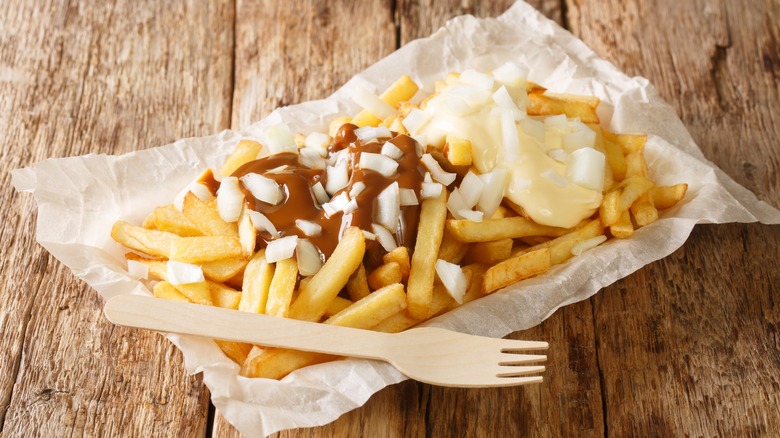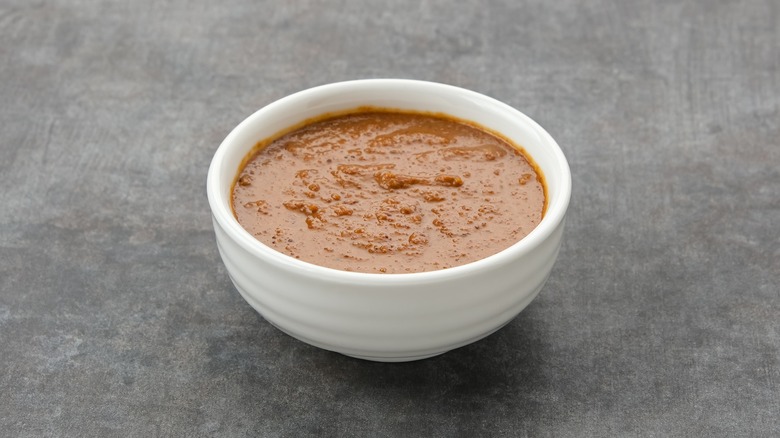What Are Dutch War Fries And Why Are They Ready For Battle?
French fries may or may not be French in origin, but what is certain today is that crispy potatoes have become a globally-beloved treat. Every country does fries a little bit differently; heck, even regionally, certain U.S. states go wild with them (see New Jersey's Disco Fries). Some douse their fries in ketchup, some in hot gravy — but what about fries with peanut sauce? It might sound unusual at first, but in the Netherlands, it's part of a classic dish with a very ominous name.
Patatje oorlog is a popular Dutch snack whose name literally translates to "war fries" or "war chips". It starts with a bed of hot, crispy French fries, which then get doused in two different sauces. First comes creamy mayonnaise, then a sweet and spicy satay sauce made with peanut butter, soy sauce, and chiles. Chopped onions go all over the top, sometimes with a squirt of ketchup to boot.
The name "war fries" refers to the visual clash between the mayonnaise and peanut satay sauce, as well as the fact that this messy dish might leave your plate looking like a battlefield. There's another layer of symbolism to this dish's name — one with darker implications — because one of the key ingredients in war fries came to the Netherlands as a result of very real warfare.
War fries have roots in Dutch colonial history
The Dutch certainly love their fries. In fact, a look at McDonalds fries around the world reveals that the Netherlands favors a particular variety. Peanut sauce, on the other hand, might seem out of place there at first. If you're familiar with the kind of peanut sauce served over Dutch war fries, it's probably because you've tried it on a satay dish, such as these satay-style grilled tofu skewers.
Satay is a broad category of food, referring to thin strips of meat grilled on skewers. The exact type of meat is variable, but the dish is almost always accompanied by a sweet and spicy peanut sauce. This is where the signature peanut sauce aspect of war fries comes from, and as you've probably guessed, it didn't originate in Dutch cuisine.
Satay is a popular dish in many parts of Southeast Asia, but it is believed to have originated on the island of Java, now part of Indonesia. The Dutch controlled this area for over 300 years, beginning with the establishment of the Dutch East India company in 1602. In their quest to take control of the territory, the Dutch facilitated wars between rival rulers of the Southeast Asian island, dismantling power structures and leaving the area ripe for takeover. Although Indonesia finally gained its independence after WWII, its history of colonialism has clearly left an imprint on Dutch cuisine.

